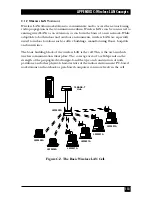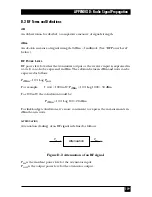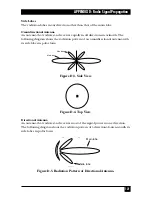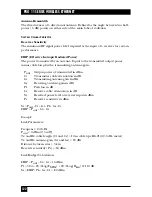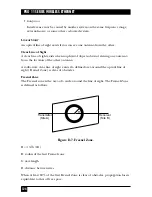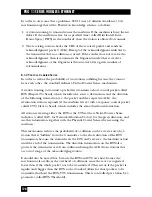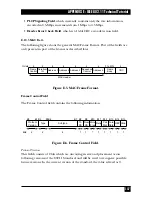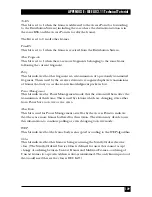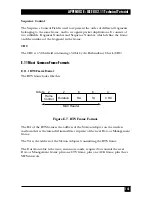
127
APPENDIX E: IEEE 802.11 Technical Tutorial
Beyond the standard functionality usually performed by MAC Layers, the 802.11
MAC performs other functions that are typically related to upper-layer protocols,
such as Fragmentation, Packet Retransmissions, and Acknowledges.
E.3 The MAC Layer
The MAC Layer defines two different access methods—the Distributed
Coordination Function and the Point Coordination Function:
E.3.1 T
HE
B
ASIC
A
CCESS
M
ETHOD
: CSMA/CA
The basic access mechanism, called the Distributed Coordination Function, is
basically a Carrier Sense Multiple Access with Collision Avoidance mechanism
(known as CSMA/CA). CSMA protocols are well-known in the industry, the most
popular being Ethernet, which is a CSMA/CD protocol (CD standing for Collision
Detection).
A CSMA protocol works as follows: A station desiring to transmit senses the
medium. If the medium is busy (meaning that some other station is transmitting),
then the station defers its transmission to a later time. If the medium seems free,
then the station is allowed to transmit.
These kinds of protocols are very effective when the medium is not heavily loaded,
since they allow stations to transmit with minimum delay. But there is always a
chance of two or more stations simultaneously sensing the medium as being free
and transmitting at the same time, causing a collision.
These collision situations must be identified so the packet can be retransmitted by
the MAC layer itself, not by the upper layers, to avoid significant delay. In the
Ethernet case, a collision is recognized by the transmitting stations, which listen
while transmitting and go into a retransmission phase based on an exponential
random backoff algorithm.
While these collision-detection mechanisms are a good idea on a wired LAN, they
cannot be used on a wireless LAN environment for two main reasons:
1. Implementing a collision-detection mechanism would require the
implementation of a full-duplex radio capable of transmitting and receiving at
the same time, an approach that would increase the price significantly.
2. In a wireless environment we cannot assume that all stations can hear each
other (a basic assumption of the collision-detection scheme), and the fact that a
station wants to transmit and senses the medium as free doesn’t necessarily
mean that the medium is free around the receiver’s area.
Summary of Contents for LW0050A
Page 2: ......

